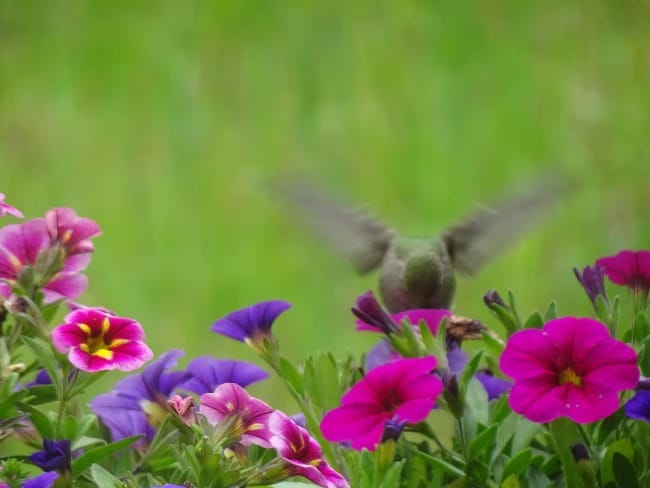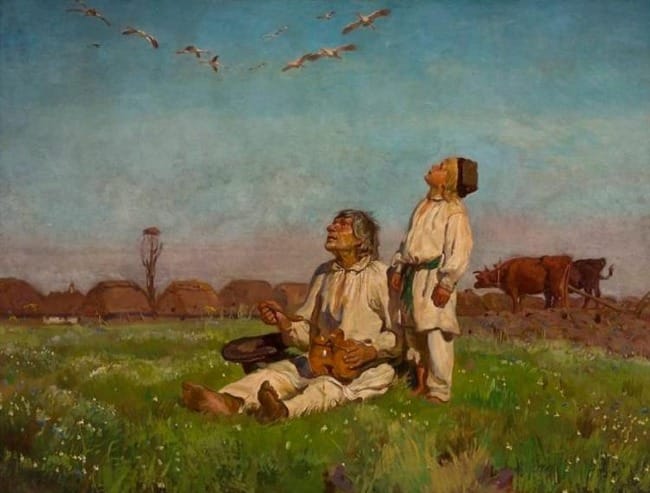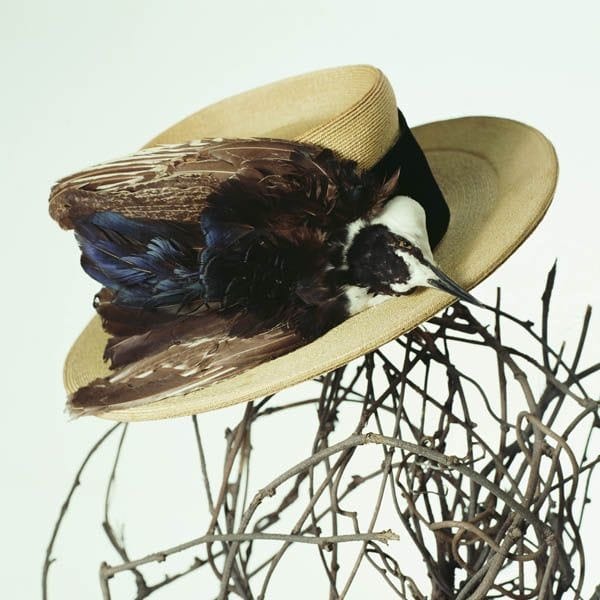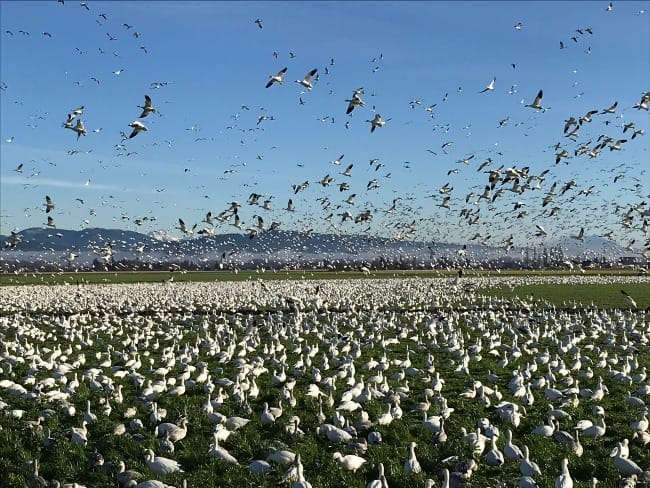In the Pacific Northwest where I live, the variety and volume of birdsong audible on an early spring morning is astounding. I would argue that of all wild creatures, birds are the ones we have the most daily association with. Apart from domesticated animals, they are the creatures the least shy of us. They come to our bird feeders, eat from our gardens, and perch on our railings. They nest in our eaves, our hanging baskets, our bushes.

Or, conversely, it could be said that when we build our houses in their yards, their fields, their trees, they often stay even after we move in. Whichever way you choose to look at it, we share a lot of space with each other. They live and sing, swoop and perch all around us. Unlike so many other creatures who hide from us, birds seem to know the power of their escape route—the air. We cannot follow them into that space, except with our eyes until they pass from our sight.

The Storks of Poland
Bociany (Storks) painted by Józef Chelmoński, a Polish artist who lived from 1849 to 1914, reflects the strong connection of humans to these wild creatures. The man and boy look skyward, bodies planted firmly on the ground, watching storks flying above their heads. The oxen, still attached to the plow, the dirty bare feet and hands, suggest it has been a hard morning of work. And yet, in the midst of a lunch break, the man pauses, wooden spoon suspended as he tilts his head skyward to watch the storks flying overhead. The boy, leaning further back, is likewise riveted by the passing flock. They, the birds, and the land itself are a connected community.
In the picture, it is summertime. The storks are living in the countryside, neither arriving nor departing for the season, but milling around during the day, with nests such as the one in the forked tree seen among the houses in the background.
Poland has been and is renowned for its storks. Currently, 20-25% of the world’s stork population, or 50,000 storks, spends summers in Poland, arriving in late March, building nests and raising young, and flying south to Africa in August. For generations, the Polish have looked on the arrival of the storks as a blessing, good luck. Many Polish homeowners welcome the annual arrivals by providing rooftop platforms for storks to nest upon every year. Sometimes they even build and fix the nests themselves—on roofs, in trees, on poles around their farms. Since the nests can weigh 500 pounds, this is quite an undertaking. As one resident of Żywkowo, Poland put it, "In winter, when the storks are gone, the silence is awful. Come spring, the back of our necks wrinkle as we lift our heads towards the sky to scan for the first arrivals. In autumn, we cry to see them go." [1]
Living with Winged Neighbors
We know a great deal about bird habits and learn more all the time; with this knowledge we can either be good neighbors or bad neighbors. We know some of what endangers many bird species, partly due to past experience. Our use of DDT put the peregrine falcon on the endangered list. In the late 19th century, the fashion of wearing birds on hats caused steep declines in several bird species, including the snowy egret and common tern. Today, many park waterfowl suffer from "angel wings," (in which the wing feathers point out laterally, instead of lying against the body, making the bird unable to fly). This deformation is caused at least partially by unbalanced, high-caloric diets of bread distributed by park visitors. The story of the passenger pigeon extinction demonstrates that we can wipe out an entire species quickly and thoroughly if we do not value other species.

Because birds associate so closely with us, humans have the opportunity to practice their cohabitation skills. Can we live with other creatures in a such way that not only we thrive, but they thrive as well? (As Noah did with the birds in the ark). Are we willing to consistently and seriously consider not just human pleasures and benefit, but what helps other creatures flourish as well? If we truly want to live as good neighbors to all of creation, we need to address the needs of other creatures besides ourselves, changing our practices when necessary.
We may need to forgo fashion trends (as Harriet Hemenway and Minna Hall convinced women to do in the late 1800's by spearheading a movement that saved the egret through tea parties, the establishment of the Audubon Society, and eventually the Migratory Bird Treaty), leave behind convenient but harmful chemical use (note Rachel Carson's book Silent Spring and its influence), and spend money on more nutritious food for ducks if we want to feed them. If we aren’t willing to go out of our way to help other creatures thrive, our talk of caring for all of God's creation is empty. This year in our region, we were asked to put away our bird feeders during a salmonella outbreak within the bird population. If we truly want to be good neighbors, we have to pay attention and respond to the needs of non-humans as well as the humans around us.
In the Skagit Valley, north of where I live, huge flocks of snow geese come in for the winter months. In part, they find winter habitat there because of farmers who plant commercial agricultural crops in the spring, and then plant a cover crop of winter wheat, providing forage for the snow geese during their seasonal stay. People come from miles around to see the enormous flocks that gather and feed in the area.

This past fall, when my husband and I visited the area, thousands and thousands of snow geese streamed in from all directions, swirling, honking, waves of straggling v's filling the sky. People lined up on the edge of the road to see the sight. All of us, like the man and the boy in the picture of the storks, were riveted by the birds above us, craning our necks as we took in the experience.
We do not all have a field we can plant in winter wheat; nor can we expect that if we build a platform on our roof, we will find a stork nesting on our rooftop. But there are simple ways to be a better neighbor to the birds (and other creatures) around us. It may be as simple as planting a sunflower and leaving the harvest to the blue jays. It may mean using a more eco-friendly mulch. Being a good neighbor means being attentive, listening well, and being generous toward our neighbors—whether they walk, fly, crawl, or slither. Living well with the birds around us is a great place to start.
Reflection Questions: Have you paused this week to look up at the sky and see what might be living near you? How much thought do you give to the needs of the wild creatures you share space with? Are there habits that you might need to reexamine for the sake of other creatures?
Louise
Click here to leave a COMMENT or SHARE this post
You can contact me directly at info@circlewood.online.
To see more works by Józef Chełmoński,visit this site.
[1] Waszak, Stanislow, In Poland, a stork is a man's best friend, https://phys.org/news/2013-08-poland-stork-friend.html.